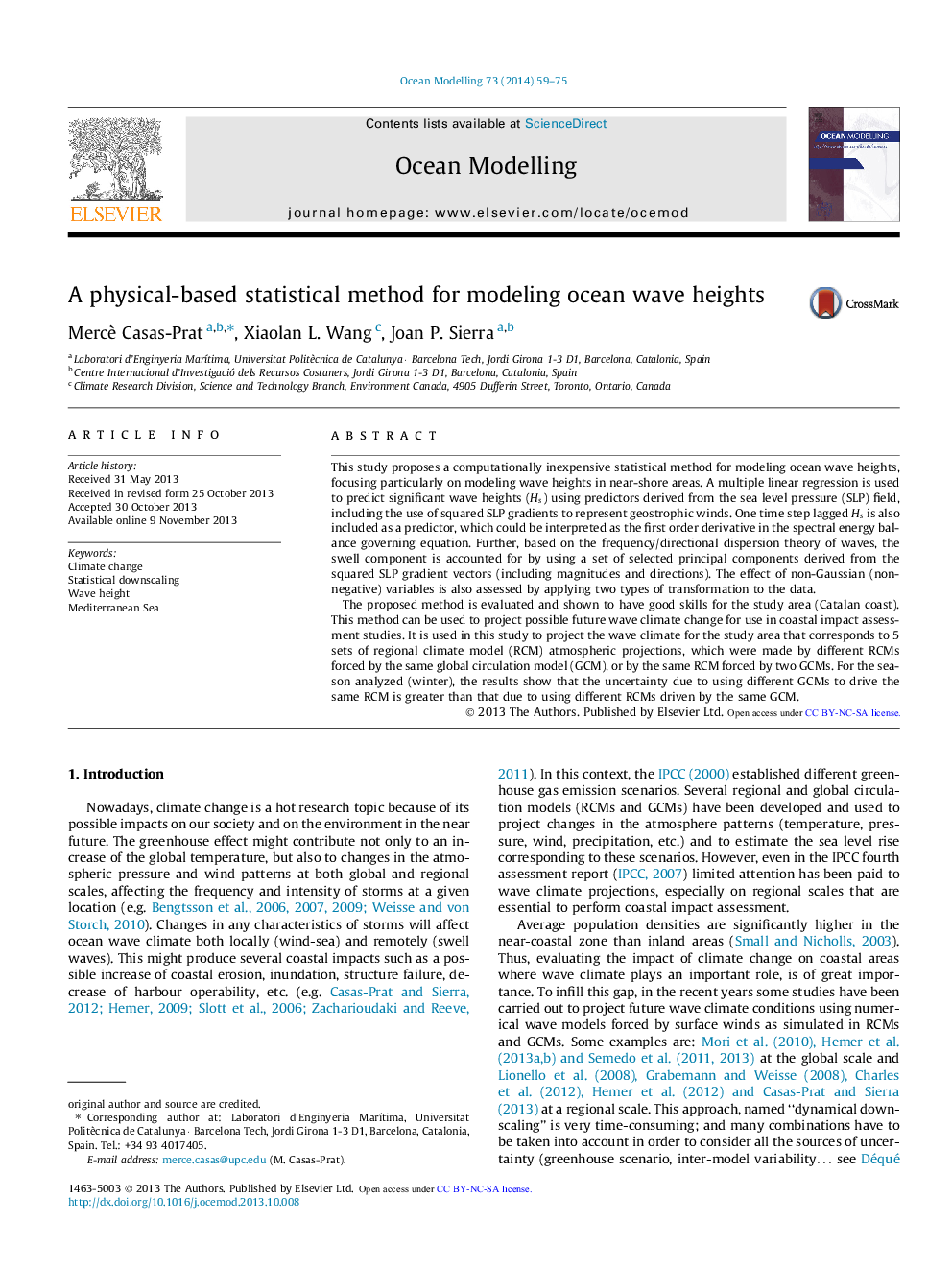| کد مقاله | کد نشریه | سال انتشار | مقاله انگلیسی | نسخه تمام متن |
|---|---|---|---|---|
| 6388281 | 1627775 | 2014 | 17 صفحه PDF | دانلود رایگان |
- We develop a new statistical method to model Hs, focusing at near-shore areas.
- It can be used to study several future Hs projections with low computational cost.
- The swell is approximated considering its frequency and directional dispersion.
- We project future Hs for the study area, where the method is very skillful.
- The method can be calibrated and used for other regions.
This study proposes a computationally inexpensive statistical method for modeling ocean wave heights, focusing particularly on modeling wave heights in near-shore areas. A multiple linear regression is used to predict significant wave heights (Hs) using predictors derived from the sea level pressure (SLP) field, including the use of squared SLP gradients to represent geostrophic winds. One time step lagged Hs is also included as a predictor, which could be interpreted as the first order derivative in the spectral energy balance governing equation. Further, based on the frequency/directional dispersion theory of waves, the swell component is accounted for by using a set of selected principal components derived from the squared SLP gradient vectors (including magnitudes and directions). The effect of non-Gaussian (non-negative) variables is also assessed by applying two types of transformation to the data.The proposed method is evaluated and shown to have good skills for the study area (Catalan coast). This method can be used to project possible future wave climate change for use in coastal impact assessment studies. It is used in this study to project the wave climate for the study area that corresponds to 5 sets of regional climate model (RCM) atmospheric projections, which were made by different RCMs forced by the same global circulation model (GCM), or by the same RCM forced by two GCMs. For the season analyzed (winter), the results show that the uncertainty due to using different GCMs to drive the same RCM is greater than that due to using different RCMs driven by the same GCM.
Journal: Ocean Modelling - Volume 73, January 2014, Pages 59-75
